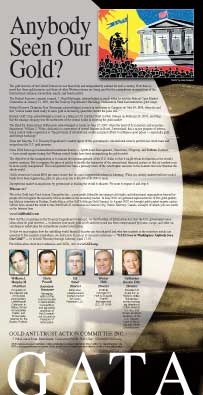By Liam Halligan posted at Telegraph UK
November 28
The trade deficit of the world's biggest economy also remains huge. How much longer can the dollar defy gravity?
Last week, America's currency fell to a 15-month low against the euro, cutting through $1.5050. Against a trade-weighted currency basket, the dollar was also at its weakest since July 2008. The greenback plunged to parity with the rock-solid Swiss franc, then hit a 14-year low against the yen.
The dollar's weakness is based on fundamentals – not least America's jaw-dropping debt. It's a long-term trend. From the start of 2002 until the middle of last year, the dollar lost 30pc on a trade-weighted basis.
It was during the summer and autumn of 2008, though, that the sub-prime debacle entered its most vicious phase (so far). The rescue of Fannie Mae and Freddie Mac, America's quasi-state mortgage-lenders, followed by the Lehman collapse, sent shock waves around the world. For six months or so, Western investors piled into what they knew, liquidating complex positions and buying plain dollars. The greenback became stronger, spiraling upward during the so-called "safe haven rally".
All that has now changed. The trade-weighted dollar has lost 22pc since March. One reason is that, since the spring, the Federal Reserve has been printing money like crazy – both to bail out Wall Street and service America's rapidly growing debt.
Complete Article
Subscribe to:
Post Comments (Atom)

![[Most Recent Quotes from www.kitco.com]](http://www.kitconet.com/charts/metals/gold/t24_au_en_usoz_2.gif)






No comments:
Post a Comment